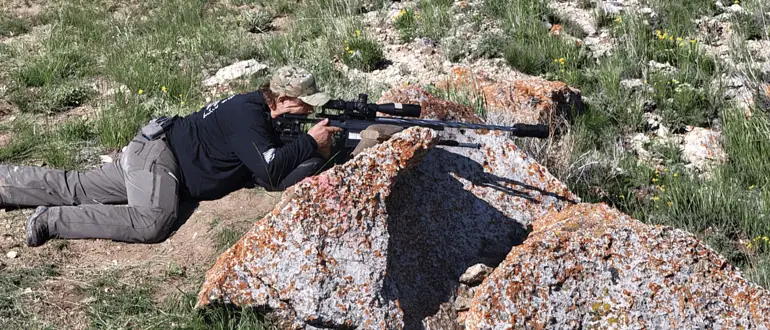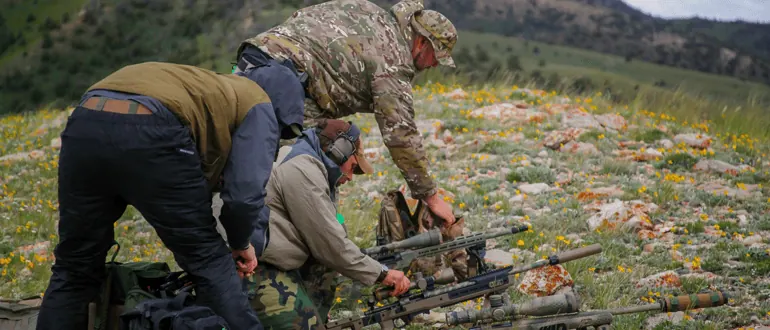
Long-range shooting is a discipline that requires patience, precision, and a deep understanding of both equipment and the environment. Whether you are a novice or an experienced marksman, mastering the art of long-range shooting is a journey of continuous learning and improvement. This blog will explore essential gear, techniques, community involvement, notable events, and the rewarding path from beginner to expert.
The Art of Long-Range Shooting
Experience the thrill and precision of long-range shooting, where every shot is a testament to skill and mastery. Beyond simply hitting a target, this discipline blends artistry with science, requiring an understanding of ballistics, wind dynamics, and precise equipment calibration. Whether in competitive sports or ethical hunting, long-range shooting demands unique talents and values.
In sports, enthusiasts embrace the challenge of hitting targets at extreme distances, pushing the boundaries of technology and strategy. It’s a dynamic pursuit that fosters continuous improvement and rewards those who excel in mental acuity and physical precision. For hunters, mastering long-range shooting isn’t just about the thrill of the chase—it’s about ensuring humane, effective kills and respecting the environment.
Imagine the scene: a shooter poised, calculating adjustments for wind speed and elevation, embodying the essence of focus and patience. This isn’t merely a hobby; it’s a passion that evolves with each shot taken. Whether you’re drawn to the competitive arena or seek to refine your skills for ethical hunting, long-range shooting offers an unparalleled adventure.
Essential Gear For Long-Range Success

Long-range shooting demands a meticulous blend of skill, precision equipment, and environmental awareness. Whether aiming for targets hundreds of yards away or navigating varied terrain, having the right gear can make all the difference in achieving consistent accuracy. Here’s a breakdown of the essential equipment every long-range shooter should consider:
- Precision Rifle: Precision rifles are engineered for accuracy, and they are the cornerstone of any setup. They feature heavy barrels and customizable designs for long-range stability and performance.
- High-Quality Scope: A crucial tool for clear target acquisition, equipped with adjustable turrets and a reticle for precise range estimation and bullet drop compensation.
- Match-Grade Ammunition: Specifically crafted for consistency and accuracy, vital for achieving tight groupings at extended ranges. Reloaded by experts to meet exacting standards.
- Bipod or Shooting Rest: Provides stability on uneven ground, enhancing shooting precision by minimizing movement and recoil.
Ballistic Calculator: Essential for calculating bullet trajectory, accounting for variables like wind speed and atmospheric conditions to refine shot placement.
- Rangefinder: Accurately measures distances to targets, enabling precise adjustments and ensuring shots land exactly where intended.
Spotting Scope: Allows for detailed observation of target hits and environmental conditions, aiding in adjustments for subsequent shots.
- Shooting Mat: This mat provides comfort and stability while shooting prone, protecting the shooter and the equipment from rough surfaces and debris.
- Wind Meter (Anemometer): This device measures wind speed and direction, which is critical for adjusting aim and predicting bullet drift over long distances.
- Ear and Eye Protection: safeguards against noise and debris, essential for maintaining focus and safety during extended shooting sessions.
Techniques and Skills for Mastery

Proper Positioning: The Foundation of Accuracy
- A stable shooting position is crucial, whether shooting prone, seated, or standing.
- Support the body and rifle to minimize movement.
- The prone position offers the most stability for long-range shooting.
- Body alignment with the target and rifle, along with a consistent cheek weld (the position of the face on the stock), is critical.
Wind Reading: Mastering the Invisible Force
- Accurately reading the wind differentiates proficient shooters from novices.
- Wind effects are magnified at longer distances.
- Wind calling is an art that requires observational skills, knowledge, and experience.
Controlled Breathing: Calm Under Pressure
- Proper breathing technique is vital in long-range shooting.
- Minimize body movement caused by breathing.
- Inhale and exhale normally, then pause at the natural respiratory pause to take the shot, stabilizing the rifle and maintaining a steady aim.
Aiming Precision: The Path to the Bullseye
- Precise aiming involves more than just lining up the sights with the target.
- Understand the sight picture (the relationship between the target, the reticle, and the eye).
- Adjusting for bullet drop and wind drift requires knowledge of the rifle’s ballistics and the ability to read environmental factors.
Trigger Control: Smooth and Steady
- Smooth and consistent trigger control prevents disturbing the rifle’s aim at the moment of firing.
- Squeeze the trigger gently with the pad of the finger, avoiding jerking or pulling rapidly.
Skill Development: Practice Makes Perfect
- Long-range shooting is a skill where practice is non-negotiable.
- Regular practice is essential to maintain and improve proficiency.
Mental Focus: The Edge of Elite Shooters
- Long-range shooting requires a high degree of focus and mental discipline.
- Stay calm and maintain concentration over long periods, especially under varying and challenging conditions.
The Community and Competitions
Connecting with Fellow Shooters
Entering Competitions: Test Your Skills
Notable Events: The Heart Mountain Challenge

- Stages: At the Heart Mountain Challenge, shooters face targets at varying distances, often surpassing 1000 yards. These stages demand skillful wind reading and precise ballistic calculations, creating a truly diverse and challenging shooting experience.
- Timed Events: Timed stages add an element of urgency to the competition. Shooters must quickly and accurately engage targets, testing their ability to perform under pressure and emphasizing speed and precision.
- Unknown Distance: The unknown distance stages are the ultimate test of a shooter’s skills. Participants must estimate the range to target themselves, requiring exceptional rangefinding abilities and deep knowledge of ballistics to hit their mark.
- Team Competitions: Team-based stages foster collaboration and strategic thinking. Shooters must communicate effectively and coordinate their actions, highlighting the importance of teamwork in achieving success in the competition.
Embrace the Journey: From Novice to Expert
Long-range shooting transcends rifle firing, embodying a complex interplay of skill, technology, and mental acuity. This sport appeals to competitive sharpshooters, ethical hunters, and recreational marksmen, offering unique challenges and joys.
The communities and events around long-range shooting, like the Heart Mountain Challenge, foster camaraderie and competitive spirit, connecting the sport with greater causes. These gatherings highlight its deeper value—bringing people together, supporting noble initiatives, and sharing a passion.
Enjoy Your Next Adventure with LandLeader
Disclaimer: Connect with the appropriate authorities or agencies for more information on your local laws. Hunting and recreational shooting regulations vary from state to state. LandLeader is not responsible for the due diligence of land use laws.